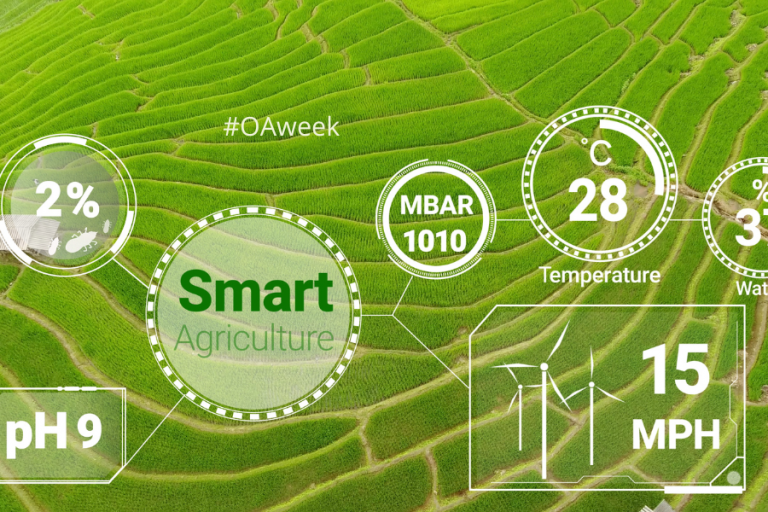Scientific journals increasingly recommend that authors, while submitting their manuscripts, add to their articles the so-called Data Availability Statement (DAS), i.e. information about the research data and its possible availability. This will promote the transparency, openness, and reproducibility of research. The idea of the DAS is to provide readers of the article with more detailed information about the research data and its openness. According to studies (e.g. Colavizza et al. 2020), articles containing open research data benefit not only the reproducibility of science, but also the researcher himself: articles with open datasets also receive more citations.
Several large scientific publishers have their own guidelines for writing a DAS. However, the DAS should include, for example, all the types of research data that have been used to produce research results, where the data can be found, the degrees of openness of the data, how the data can be shared or reused, and what possible terms of use or restrictions there are according to the use of the data. If the data cannot be shared or if no datasets have been used to obtain the research results, that is also a good idea to mention as a part of the DAS.
How well the research data has been reported in articles published by researchers at the Tampere University? In autumn 2022, information specialists Kaisa Kylmälä and Tomi Toikko from the Tampere University analyzed a total of 2085 A1-level publications written by university researchers during 2020 and 2021. Of these publications, 540 (approx. 26% of those analyzed) included the Data Availability Statement. In order to find DAS notifications, the articles were manually reviewed and searched for mentions about the research data and its availability. Also, aspects related to the transparency and limitations of the data were recorded in the content of the DAS.
Kaisa and Tomi, based on your report, what is the situation regarding Data Availability Statements in articles published by our university’s researchers?
There were few DAS notifications so far, but even this kind of short-term sample showed a clear increase in the prevalence of DASs. Among the articles published in 2020, DAS was found in about 20%, while in the 2021 articles, the DAS notification was already found in about 31% of articles. The study also found clear differences between the faculties of TAU. Different disciplines are at different levels of maturity when it comes to data management, its openness, and publishers’ guidelines in relation to them. This information will be utilized as we continue to develop data services at the university.
You found total of 540 DAS notifications. Were they easy to find?
The titles and locations of DAS notifications varied greatly, and we found 39 different headlines under which the DAS article was found. By far the most common title was logically the Data Availability Statement, which accounted for 43% of all DASs. Other common headlines included Data Availability and Availability of Data and Materials. In the headlines, the words data and availability were most often repeated in different variations. In some articles, however, the availability of data was discussed in other parts of the article instead of the actual DAS. These locations included Notes, Acknowledgements, and Supplementary Data.
You also looked at DAS notifications in open access publications. What observations did you make?
Our analysis showed that DAS was clearly more common in openly published articles than in hybrid publications or articles behind a paywall. The same was true for open data, i.e., the amount of open data in openly published articles was significantly higher than in other articles.
What kind of data sharing practices emerged from your study?
Interestingly, the most common place to store data was the article itself. On the other hand, many publications mentioned that the data is available upon request from the researcher by a “reasonable request”. It would be interesting to find out whether the data is actually available from the researcher, on what schedule and what this reasonable request actually means.
Do publishers clearly instruct on how to write a DAS?
The guidance for DASs from both publishers and funders has already started to appear nicely in recent years, but there are still publishers who have ignored the issue. On the other hand, there are also differences in the binding nature of DAS recommendations and guidelines. All the DAS found in our study were found in English-language articles by international publishers, so there is still some practice to be done domestically.
Does the Tampere University have its own recommendation for submitting a DAS notification?
Yes, we do have a recommendation for DAS. It can be found in our Research data management guide.
The survey data has been opened in Zenodo: https://zenodo.org/record/7564441
If you have any questions related to DAS notifications or research data management, please contact Tampere University Data Support researchdata@tuni.fi
Sources:
- Colavizza G, Hrynaszkiewicz I, Staden I, Whitaker K, McGillivray B (2020) The citation advantage of linking publications to research data. PLOS ONE 15(4): e0230416. https://doi.org/10.1371/journal.pone.0230416
- How to write a data availability statement? https://zenodo.org/record/4788779#.Y6658dVBw2w



